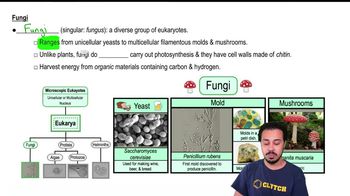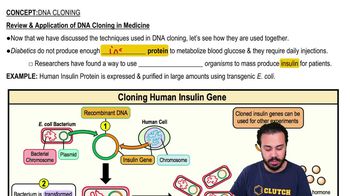Recombinant DNA is
a. DNA in bacteria.
b. the study of how genes work.
c. the DNA resulting when genes of two different organisms are mixed.
d. the use of bacteria in the production of foods.
e. the production of proteins by genes.
 Verified step by step guidance
Verified step by step guidance



Recombinant DNA is
a. DNA in bacteria.
b. the study of how genes work.
c. the DNA resulting when genes of two different organisms are mixed.
d. the use of bacteria in the production of foods.
e. the production of proteins by genes.
Match the people in column A to their contribution toward the advancement of microbiology, in column B.
<IMAGE>
Which of the following statements is the best definition of biogenesis?
a. Nonliving matter gives rise to living organisms.
b. Living cells can only arise from preexisting cells.
c. A vital force is necessary for life.
d. Air is necessary for living organisms.
e. Microorganisms can be generated from nonliving matter.
Which of the following is a beneficial activity of microorganisms?
a. Some microorganisms are used as food for humans.
b. Some microorganisms use carbon dioxide.
c. Some microorganisms provide nitrogen for plant growth.
d. Some microorganisms are used in sewage treatment processes.
e. all of the above
NAME IT What type of microorganism has a peptidoglycan cell wall, has DNA that is not contained in a nucleus, and has flagella?
It has been said that bacteria are essential for the existence of life on Earth. Which of the following is the essential function performed by bacteria?
a. control insect populations
b. directly provide food for humans
c. decompose organic material and recycle elements
d. cause disease
e. produce human hormones such as insulin